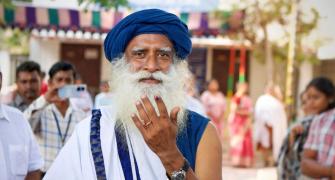The number of diabetic patients in the country, which was 31.7 million 2000, is expected to shoot up to 79.4 million by the year 2030, according to the World Health Organisation.
India is followed by the US and China with around 22 million and 25 million diabetes patients, respectively.
Significantly, while India has emerged as the diabetic capital of the world, Hyderabad has the highest incidence of diabetes among the cities.
As per the National Urban Diabetes Survey, the overall prevalence rate for diabetes in urban areas in the country is 12 per cent. Hyderabad has the highest prevalence rate of 16 per cent, followed by Chennai (13.5 per cent), Bangalore (12.4 per cent).
The country will face an enormous economic burden due to diabetes in the years to come unless preventive steps are taken, a leading diabatologist in the country said here on Saturday.
V Mohan, chairman of Madras Diabetes Research Foundation, M V Diabetes Specialities Centre, told media persons that the average annual spend of Rs 5,000 for a diabetes patient in 1995 would double by the year 2025. This would translate into approximately Rs 57,000 crore (Rs 570 billion) medical costs to be incurred by the country every year after 2025, he said.
He said that the diabetes prevalence in the country was akin to a volcano ready to erupt.
MDRS and other agencies were engaged by health research agencies in the US and Canada two years ago to conduct studies on Indians' predisposition to diabetes.
The Indian project was different in that two drugs -- rosiglitazone and ramipril -- were also being given to the participants to learn about their efficacy to prevent diabetes, he said. Mohan is the principal investigator of the project.
"Glitazones belong to the newest family of diabetes tablets, thiazolidinediones. They help in overcoming insulin resistance, enabling the body to use its own natural insulin more effectively. There are at present two types of glitazones -- pioglitazone and rosiglitazone. Those participating in the study have all tested positive in impaired glucose tolerance tests. An IGT test checks blood sugar two hours after a meal. An IGT positive generally contacts diabetes in five to 10 years. But changes in lifestyle can help keep pre-diabetes from escalating to diabetes," Mohan said.
MDRF has also brought out indigenously for the first time a device to assess autonomic neuropathy and a software to measure atherosclerosis. Diabetic individuals are more prone to autonomic neuropathy which leads to heart rate abnormality, impotence, diarrhoea, etc.
Atherosclerosis is hardening of the walls of arteries caused by fatty deposits that build on the inner walls of the arteries which interfere with blood flow.
Mohan said that MDRF has tied up with the American Dental Association to conduct a post-graduate course in diabetology for senior medical professionals.
The course will be held in Chennai from September 24 to 26. "MDRF also runs a two-year PG course in the subject for junior doctors," he said.
He said that good physical activity and proper diet rich in proteins and fibre with less intake of calories and fat were the only effective preventive measures against the diseases.
"Major studies abroad had established this fact and a similar study was being conducted in India as well," he added.







